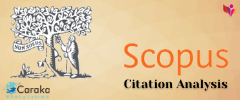Development of a Training Curriculum Structure to Improve ICT Competencies of Teachers in Primary Schools
Abstract
Possessing ICT skills for learning was a necessity for primary schools teachers in accordance with the requirements of current development and Education 4.0. This multi-year research had entered its third year in which it sought to discover information about the types of ICT training materials that were appropriate for the needs of teachers in primary schools and development of effectiveness of an ICT training curriculum structure. This research employed a descriptive survey design. The sample included 30 teachers in primary schools from 12 regions with different school characters in Sumedang Regency, West Java. The findings of this research showed an overview of a gap between teachers who had capabilities in utilizing ICT and teachers who needed to develop their capabilities in utilizing ICT through a practice. In attempting to mediate this gap, this research designed an ICT training curriculum structure that was appropriate for the needs of teachers in primary schools.
Keywords
Full Text:
PDFReferences
A A Syahid, I. I. (in Press). ICT Training Curriculum To Develop Primary School Teachers' Pedagogy. Journal of Physics: Conference Series.
Friedman, P. A. (1985). Training Strategies From Start to Finish. New Jersey: Prantice-Hall International Inc.
Gay, L.R. & Diehl, P.L. (1992). Research Methods for Business and Management. New York: MacMilan Publishing Company.
Ghavifekr, S., Rosdy, W.A.W. (2015). Teaching and Learning with Technology: Effectiveness of ICT Integration in Schools. International Journal of Research in Education and Science (IJRES), 1(2), 175-191.
Kresnanda, S. (2018). Why Training Fails? And What To Do About It. Malang: Litera Mediatama.
Law, N., Kankaanranta, M., & Chow, A. (2005). TECHNOLOGY-SUPPORTED EDUCATIONAL INNOVATIONS IN FINLAND AND HONG KONG: A TALE OF TWO SYSTEMS. Human Technology: An Interdisciplinary Journal on Humans in ICT Environments, 176-201.
Marcial, D.E., Rama, P.A. (2015, December). ICT Competency Level of Teacher Education Professionals in the Central Visayas Region, Philippines. Asia Pacific Journal of Multidisciplinary Research, 3(5), 29-38. Retrieved from www.apjmr.com
Nagler, K. S. (2016). Effective Classroom-Management & Positive Teaching. English Language Teaching, 9(4), 163-172.
Oliva, P. F. (2013). Developing the Curriculum (Eighth Edition). Boston: Pearson.
Print, M. (1993). Curriculum Development and Design (second edition). Australia: Allenand Uuwin.
Sabanci, A. (2014). The Effect of ICT Usage on the Classroom Management: A Case Study in Language Teaching. International Review of Social Sciences and Humanities, 7(1), 232-245.
Taba, H. (1962). Curriculum Development. New York: Harcourt, Brace & World, Inc.
Taylor, P. (2003). How To Design a Training Course . London: Cromwell Press Ltd.
Uluyol, Ç. Şahin, SamiS. (2016). Elementary school teachers’ ICT use in the classroom and their. British Journal of Educational Technology, 47(1), 65-75. doi:10.1111/bjet.12220
UNESCO. (2011). UNESCO ICT Framework For Teachers. France: United Nations Educational, Scientific and Cultural Organization.
Vatanartiran, S., Karaeniz, S.(2015). A Needs Analysis for Technology Integration Plan: Challenges and Needs of Teachers. Contemporary Educational Technology, 6(3), 206-220.
Wentling, L. (1994). Planning for Effective Training. Romee: W.D Maalouf Officer in-Change.
Yildiz, N. G. (2017). Classroom Management and Student Achievement: A Study on Five Elementary. AJESI - Anadolu Journal of Educational Sciences International, 7(1), 155-183.
Zais, R. (1976). Curriculum: Principles and Foundations. New York: Harper & Row Publisher.
DOI: https://doi.org/10.53400/mimbar-sd.v6i1.13889
Refbacks
- There are currently no refbacks.
Copyright (c) 2019 Mimbar Sekolah Dasar

This work is licensed under a Creative Commons Attribution-ShareAlike 4.0 International License.
View Mimbar Sekolah Dasar Stats


.png)

.png)
